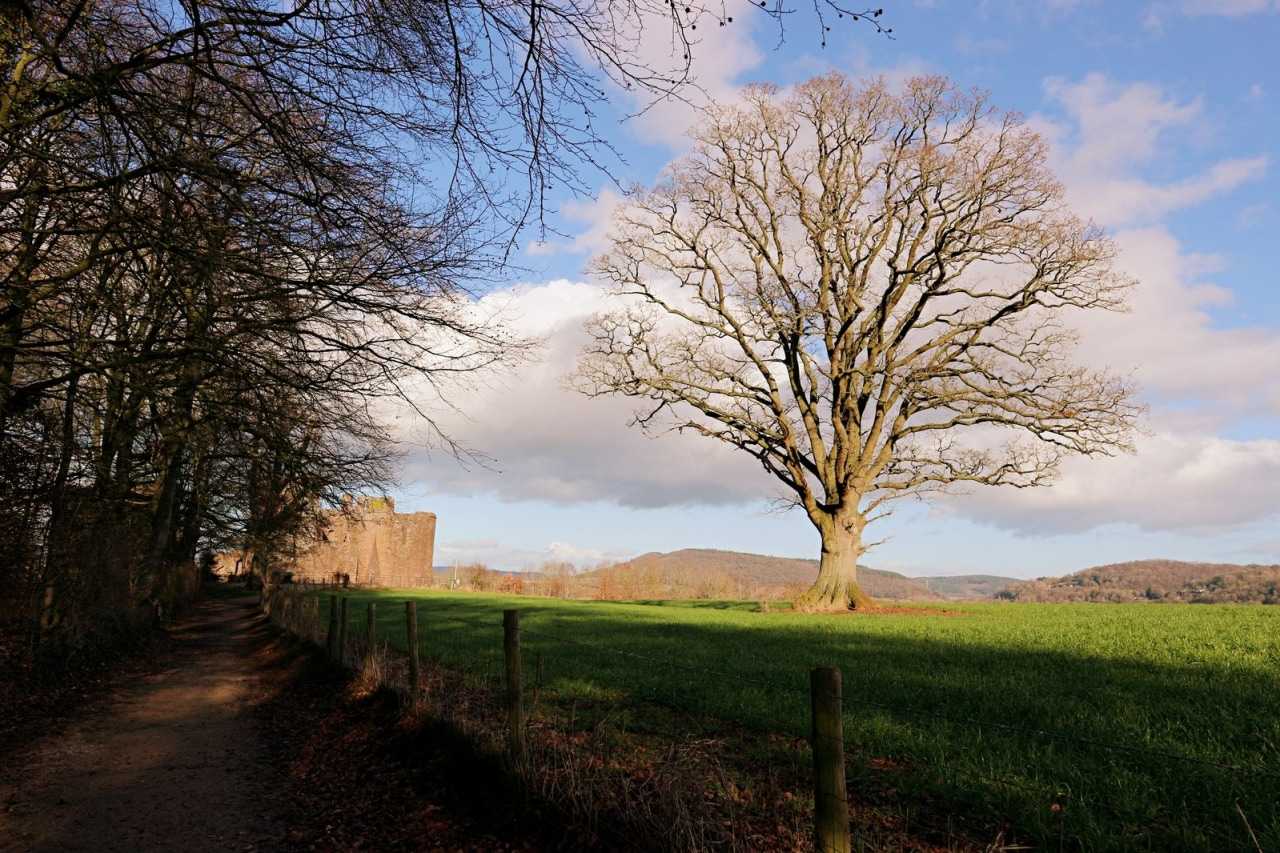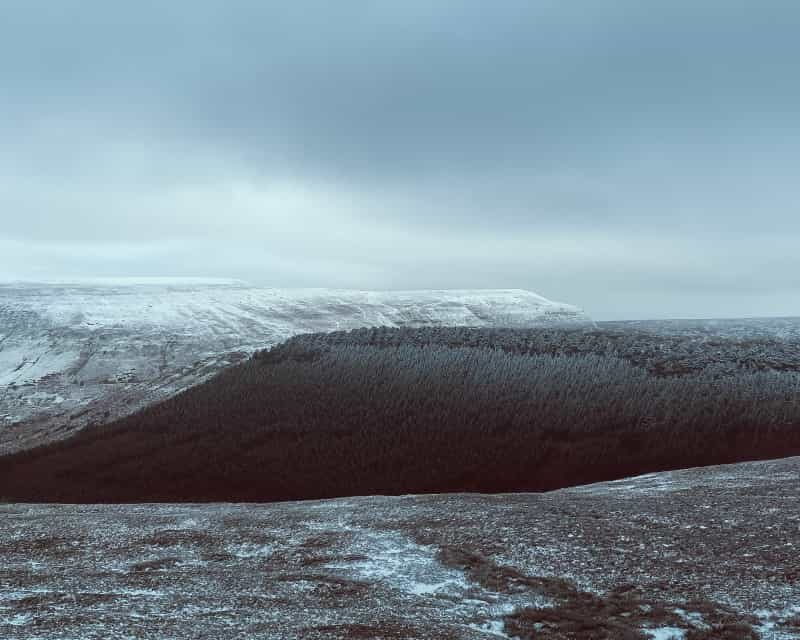6 Castles In Herefordshire To Visit
Perhaps more than anything else, Herefordshire is known for its castles. This land on the border between England and Wales has long been fought over. Strongholds were erected by the Romans, Normans and medieval lords in their struggles for supremacy.
In the Domesday Survey of 1086, nine of England’s 50 castles or fortified manors were recorded in Herefordshire. During the fractious centuries that followed, many more were constructed. Despite destruction in battle and the plundering of stones for building, there are still more than 20 castles in Herefordshire. Even those who came after the English and Welsh had embarked on an uneasy truce paid heed to the legacy of fortresses and erected vast country piles with towers and turrets.
Here are six castles in Herefordshire that you can visit, each with a thousand tales to tell.

Goodrich Castle
Goodrich Castle may be a ruin, but the Norman medieval castle is one of the most intact in Britain. The blood-red sandstone walls and the green-grey contrast moodily with the landscape in which the castle sits.
Despite its mighty defences, marauding Welshmen seldom troubled Goodrich Castle. Instead, it was crafted into an elaborate home by a succession of noble families. That is, until the peace was shattered during the English Civil War. Sheltering retreating Royalists, Goodrich was bombarded by cannon fire until much of it crumbled.
Today, a visit to Goodrich Castle is a walk through its tale of ages. As you cross the former drawbridge through an elegant chapel and step onto an elegant French balcony or spy the arrow slits in the towers and the enormous defensive buttresses, Goodrich can fascinate for hours. It is a place where lords and ladies once danced, and its folk hid from the terrifying bombardment of Roaring Meg’s cannonballs. It is said that every full moon a ghostly pair of lovers mournfully make their way back to the castle having been dashed to death trying to cross the river Wye as they fled the siege.
Not spooked by the ghost stories? Search campsites in Herefordshire.
Croft Castle
More a fortified stately home than a soldiering stronghold, people have lived and worked at Croft Castle for thousands of years. The National Trust-managed property has been the residence of the Croft family since before the Domesday Book. Croft Castle and its barons have played a notable part in English history, and you can learn about their stories throughout the house.
The main property largely dates from the 17th century and was built on what was a medieval fortress. Many of the rooms have been restored to reflect how they would have looked at periods during Croft Castle’s long history. The adjacent St Michael and All Angels church is equally impressive.
A visit to Croft Castle easily makes for a full day out. Set in 1,500 acres of parkland, there are waymarked walks to follow, including a trail to Croft Ambry, an Iron Age hillfort. Visitors can also stroll through the extensive gardens with a vineyard and an orchard with 50 varieties of apple.
Wigmore Castle
The impressive ruins of Wigmore Castle were likened to Winterfell, the Game of Thrones stronghold, when the property was put on the market a few years ago. The castle has been in the care of English Heritage since the 1990s, but it has been in private ownership throughout its long history, with continued access to the public as a condition of sale.
Wigmore Castle dates to 1067 and its construction was ordered by William Fitz Osbern, a lord who had a hand in almost every battle and plot in the early years of the Norman Conquest.
The ruins stand high on a defensible position and are buried up to first-floor level by centuries of accumulated earth and fallen masonry. Visitors to Wigmore Castle can climb the steps up from its moat and deep ditches to imagine what this land would have looked like during the castle’s turbulent history and to take in views overlooking the Black Mountains in Wales.

Eastnor Castle
In the foothills of the Malverns, Eastnor Castle is a manor house that was built in mock castle style in the early 19th century. When the First Earl Somers, whose ancestors had lived at Eastnor for centuries, decided his family should have a more impressive legacy, he set out to build this fairytale residence.
The most notable view of Eastnor Castle is the one that greets you on the approach. The building stands high, flags flying, above a tree-lined lake with its reflection in the water. Inside there are lots of rooms to wander through, each notable for its history and lavish detail. The castle’s estate also has an extensive deer park and unique arboretum. For a family day out, there are adventure playgrounds, as well as the knight’s maze and treetop walkways.
Hampton Court Castle
Herefordshire’s own Hampton Court Castle is lesser known but equally as impressive as its namesake built by Henry VIII by the River Thames in London. Near the market town of Leominster, the 15th-century manor house was the country residence of Sir Roland Lenthall who had married King Henry IV’s cousin. During the intervening centuries, the property was incrementally added to and made to look more ‘castleish’ in the 1830s.
Hampton Court Castle became the seat of the Viscount of Hereford before it was sold in 1972. Having lain empty for several years, the house and its gardens have since been extensively restored. The house is open for self-guided tours, but many folk visit simply to marvel at the award-winning grounds, where you can see just one of the many gardens to visit in Herefordshire.
Visitors can also wander by canals or island pavilions and follow walkways through a kitchen garden, a maze created from 1,000 yew trees, formal walled gardens, a sunken water garden, a Dutch garden and in spring, a stunning Magnolia walk.
Browse holiday parks in and around Leominster.
Longtown Castle
Longtown Castle was built in the 12th century on the site of an earthen enclosure that had been used by the Romans to control a tribe of Britons who objected to their presence. When William the Conqueror attempted to take Wales, he dispatched William de Lacey as his chosen lord to do so. De Lacey erected much of the castle that today lies in ruins. It was abandoned after his ancestors became penniless and has remained here, slowly decaying, ever since.
Local legend suggests there is a coffin buried in the castle that contains 1,000 gold coins. Perhaps they make up the lost fortune of De Lacey’s daughters, who were chased from Longtown by King John in the 13th century.
Today you can walk through the intact gateway to explore the ruins, including its round keep and tower, via a footpath that extends all the way around.
The free-to-visit site of Longtown Castle is a popular stop-off point for walks along the Olchon Valley and on towards the Black Mountains. We’ve got info on lots more routes in our guide to the best walks in Herefordshire.
Looking for more places to visit on a holiday in the area? There are plenty of them, so take your pick from this guide to the best things to do in Herefordshire.